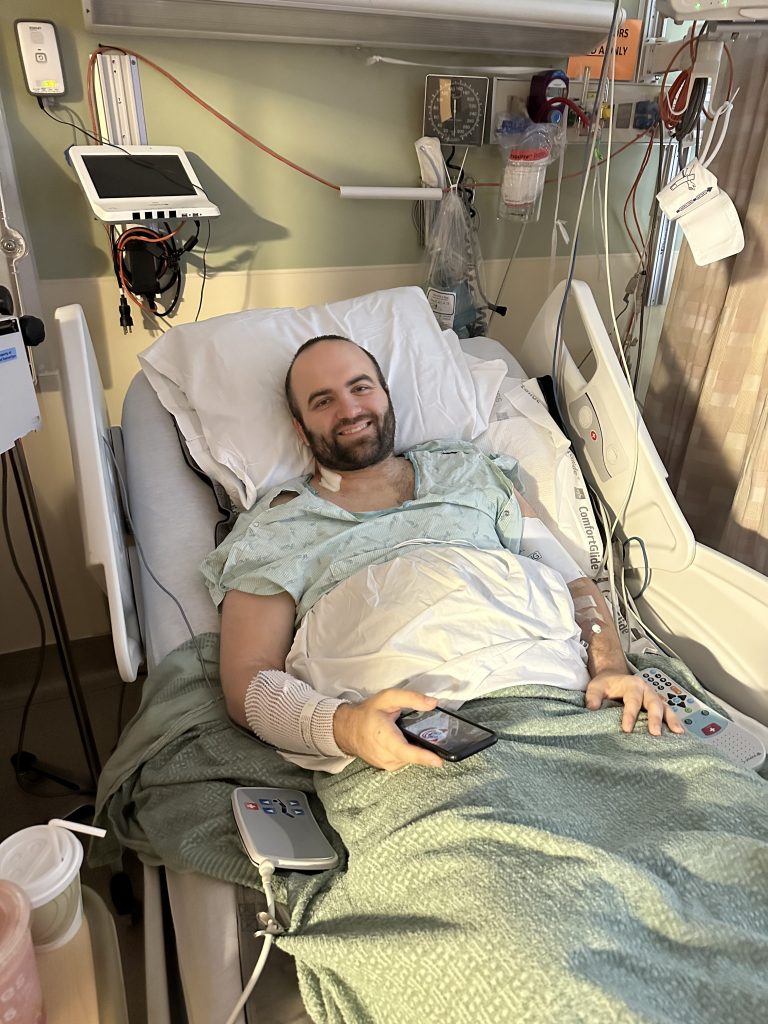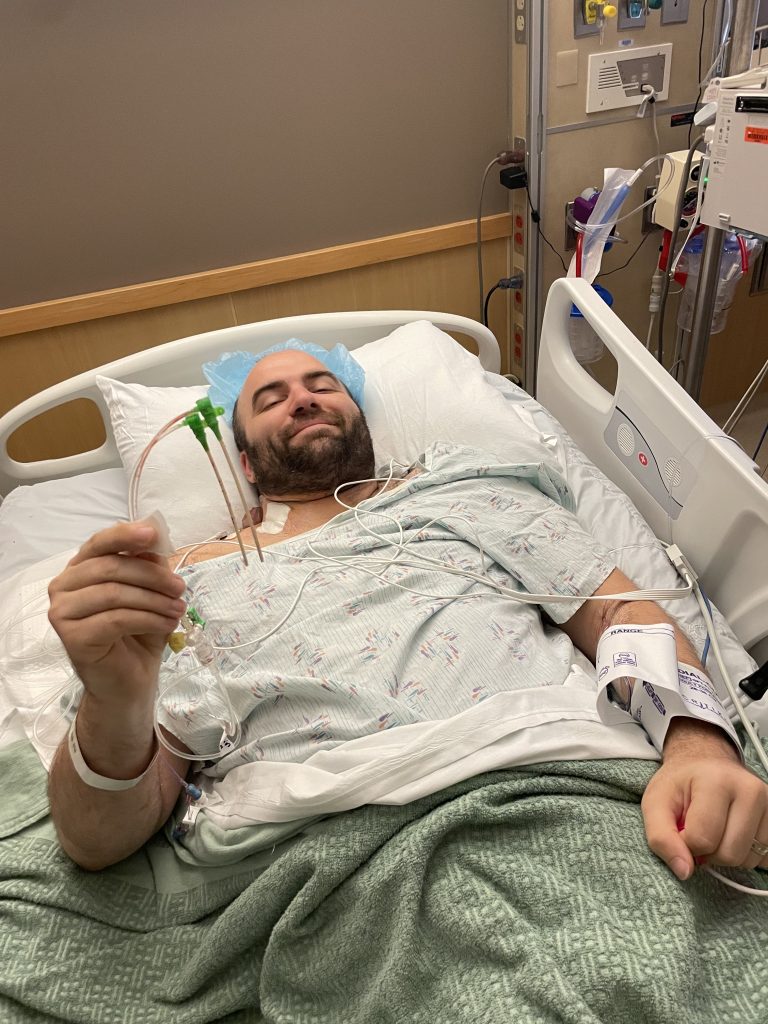
Date: May 24, 2024
Written by: Officer Joshua Velliquette
Learning all the required information throughout EMT training is like trying to drink through a firehose, which is fitting since our class was led by two members of local fire department leadership. You find yourself struggling to choke down information while simultaneously gasping for air alongside your classmates as a steady stream of acronyms, policies and procedures, and best practices wash over you.
Countless hours are spent committing as much written information as possible to memory and physical techniques to muscle memory. You learn about the similarities and differences in treating traumatic injuries versus illness situations. Throughout training scenarios, I imagined myself stabilizing a patient’s cervical spine after a violent vehicle collision, rousing an individual from a respiratory depression following an opioid overdose with NARCAN, and stopping an arterial bleed by rapidly placing a tourniquet on a wounded victim.

Looking back, one hundred percent of my effort and brainpower spent on becoming the best EMT I could possibly be centered on complete strangers around the city of Seattle that I would encounter in the future.
Little did I know, I would be using some of my training and experience six months after EMT graduation to save my own life.
My plans for being an effective and dependable EMT were almost immediately scrapped as I was suddenly and unexpectedly diagnosed with a neurological condition that necessitated prompt attention and treatment. I spent month after month scheduling and attending medical appointments with neurologists and physical therapists. Eventually, I fell into a solid rhythm receiving medication infusions, but stabilization or improvement of my symptoms was difficult to pinpoint.
I tried to live life as normally as possible, but my deteriorating condition in the form of increased weakness and decreased balance and mobility took me off the streets and made my situation impossible to ignore.
In early May of 2023, I thought I was developing a chest cold. All I wanted to do when I came home in the evening was shuffle to bed, bury myself in blankets, and sleep forever. Climbing a set of stairs rivaled the last few hundred meters of summiting Mount Everest without oxygen. Spending ten seconds to roll out of bed and walk to the bathroom soaked me in sweat like something you would see after 20 minutes spent in a scorching sauna. At one point, I noticed my heart was racing while I was sitting calmly at my computer desk. I measured my heart rate and discovered it was beating at a constant 125 beats per minute, which is obviously not normal (a normal resting heart rate for an adult is between 60 to 100 beats per minute).

Foolishly, I ignored these symptoms initially. I assumed I had been drinking too much coffee and/or had simply fallen out of shape. Instead of investigating these clues further, I decided to head to bed and rely on sleep to naturally slow my heart rate.
The next morning, I immediately measured my heart rate again. To my dismay, my heart rate was still 125 beats per minute. I scooted out of bed and felt a dull ache in my right leg as I dragged myself over to the bathroom. Once I started effortlessly glistening with sweat again, I grew concerned. I called my mother, a retired registered nurse, and explained what was going on. My parents decided to drive over and take a closer look at me. My mother used her stethoscope and listened to my heartbeat. She noticed an abnormal galloping heartbeat that neither she, nor I, had ever heard before.
We both agreed this was concerning, but we mutually decided I would call a cardiology clinic the following day and see if my strange heartbeat warranted a prompt visit.
My parents left for home, yet I remained nervous and unsure of my immediate situation. While exhaustion and a general feeling of lethargy was common with my neurological condition, I knew my effortless sweating, unusual and consistently high heart rate, and abnormal galloping heartbeat were new and unexpected symptoms of a separate problem. I began scanning my body mentally and visually. I remembered the dull, achy feeling in my leg and inspected it. I discovered my right leg appeared to be swollen and presented with a light purple color when compared with my left leg.
I immediately suspected I had an undiagnosed blood clot in my right leg and called my mother again. She agreed after the latest clue that I probably had a blood clot and needed to visit a nearby emergency room immediately.
The rest of the morning was a blur. I remember EKG leads getting placed on bare patches of my chest where a nurse had hurriedly shaved seconds beforehand, a blood draw for a D-dimer test, a Computed Tomography (CT) scan, and an ambulance ride from the MultiCare Emergency facility to Good Samaritan Hospital where I was ultimately treated. In the end, I was diagnosed with a deep vein thrombosis from my ankle of my right leg into my right hip and more importantly, a “massive” bilateral pulmonary embolism in my lungs.

I remember the doctor at the emergency facility tell me something along the lines of: “Usually patients are only diagnosed with what you have after they’ve arrived at the morgue.”
Honestly, that quote still gives me chills to this day. Quite frankly, I am lucky to be alive.
In EMT training, we are constantly reminded to try and avoid stressing over the finer details. We are taught it is more important to simply discern that a medical emergency is happening and do what we can to stabilize the situation and set additional resources in motion rather than agonizing over what might be exactly happening when we lack the additional knowledge, instruction, and/or resources to further investigate and diagnose those issues. Although, in hindsight, I do not believe I handled my own situation perfectly, I am thankful I used my EMT training to recognize the numerous signs and symptoms of my medical emergency, trusted my instincts, and utilized my resources to arrive at an educated guess at what was occurring.
Most of all, I am thankful for my parents for their support and the medical staff at both locations for stabilizing me, removing my blood clots, and navigating the aftermath with me. Additionally, I would like to thank my instructors, the role-players, and my peers within my EMT class for teaching me, guiding me, and learning alongside me.
Finally, I would like to thank the Seattle Police Foundation and any and all donors for supporting the Seattle Police Department and Department’s EMT program – I truly believe the training and experience I received leading up to this emergency played a part in saving my life and you were the ones who made this training possible. I hope one day soon, I can use my training to pay it forward to the people of Seattle as originally intended.
Until then, just know the training and experience we receive in these classes routinely benefits countless people inside and outside the city limits. Sometimes, our training even helps us save ourselves. Thank you.
We are so grateful to Officer Velliquette for sharing his story and to our countless EMT Unit supporters for helping us support this vital unit. Thank you all so much!

